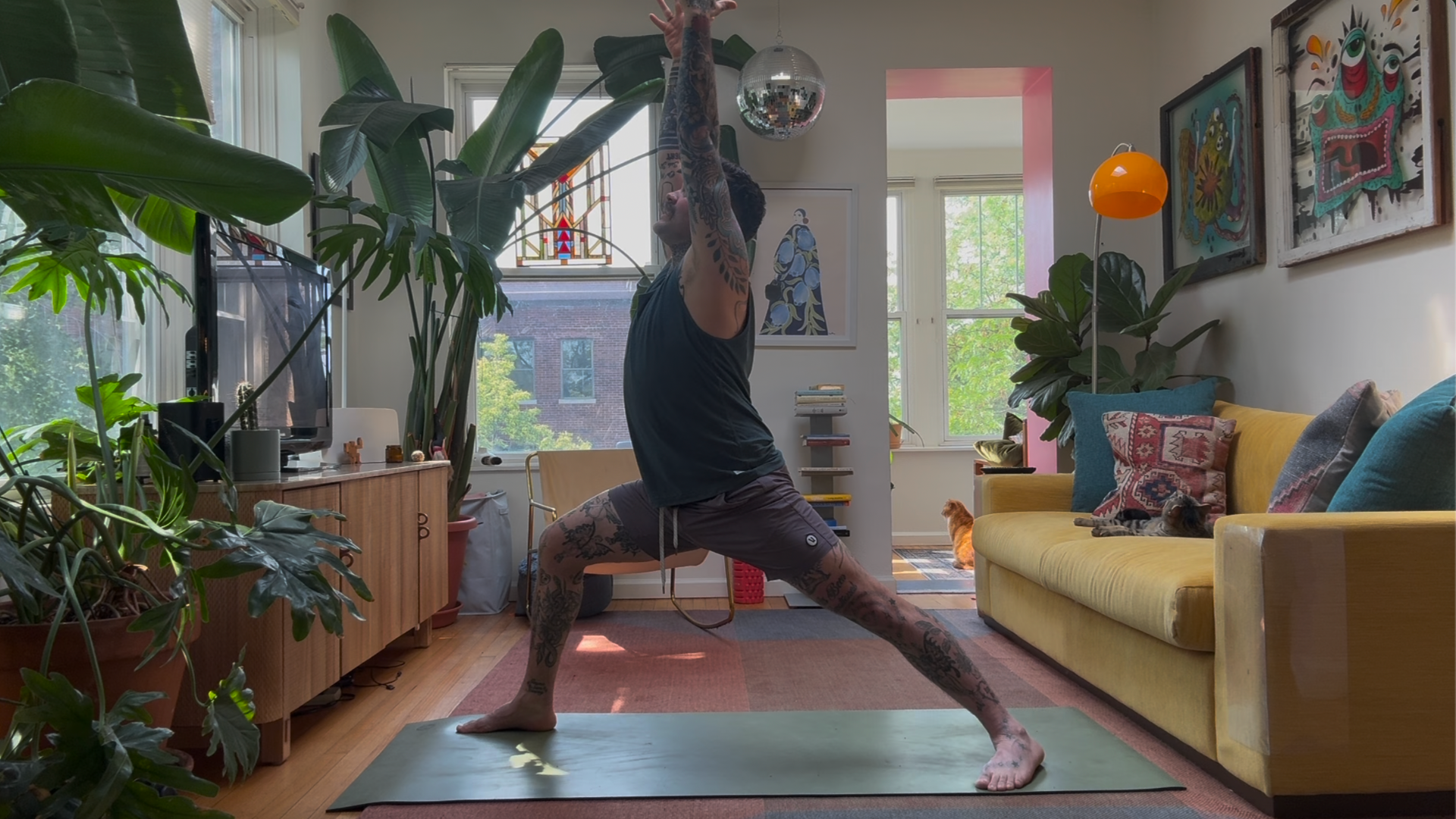Frustrated by Warrior 1? These Are the Cues You Can—and Should—Ignore.

(Photo: Bradshaw Wish)
Warrior 1 Pose has been causing existential crises in yoga students since before the popularity of sticky mats and matching sets. You’ve probably had teachers cue you to find heel-to-heel alignment, square your hips, tuck your tailbone, and pull your shoulder blades down your back. And if you’re a teacher, you may have uttered these words.
Sure, these cues work for some of us. But after years of observing students struggle with this pose, we’ve learned that what’s considered traditional alignment for Warrior 1 (Virabhadrasana I) simply doesn’t work for the majority of bodies.
The problem is these common alignment cues tend to be repeated from one generation of yoga teachers to the next. That means outdated notions of what the pose should look like in some bodies are inflicted on all students. Not to sound alarmist, but trying to force the body into a shape that may not work for your anatomy can do more harm than good.
There are ways to find steadiness and ease in this shape, and that’s what the entire practice of yoga is about, right? It’s less essential that a posture look a certain way and more important that it feels good in your body. After all, that’s why so many of us keep showing up to yoga.
So consider this full permission to tune in, make adjustments, and choose what supports you in Warrior 1 pose.
How to Do Warrior 1 Pose
Following are some alternate ways to cue and experience Warrior 1 that help you adapt the pose to create more space in the hips, relieve pressure in the back knee, and support your body’s structure.
1. Instead of: Heel-to-Heel Alignment
Let’s start with your foundation. The commonly suggested “heel to heel” alignment doesn’t work for everybody. It’s a narrow stance that, historically, was meant for a certain body shape with narrow hips.
Try: Place Your Feet in Two Lanes of Traffic
Rather than trying to balance on a tightrope, think of placing your feet in two lanes of traffic or standing on railroad tracks. Allowing yourself or your students to widen the space between the feet creates more stability, which most of us need to accommodate our hips and find balance. This not only creates steadiness but allows you to have more space for the hips to rotate forward.
2. Instead of: Square Your Hips
Speaking of rotating your hips forward, let’s talk about the cue “square your hips.” When it comes to Warrior 1, we need to let this cue go once and for all.
Warrior 1 is an asymmetrical pose, which means each side of the body is doing something different. With one foot forward and the other foot further back, the hips will never be “square” to the front of the mat.
That’s because Warrior 1 causes the back leg to be externally rotated. When you attempt to square the hips, you’re actually encouraging the back thigh bone to internally rotate, which is the equivalent of transferring tension to the knees and hips and inviting pain.
Yet we often see students who are trying to find this fictitious alignment because they’ve heard the cue so many times. As a result, they’re cranking and yanking their pelvis in an attempt to find an impossible shape. And that can cause strain, discomfort, even pain in the hips, knees, and spine.
Trying to force this alignment also tends to throw students off balance as the back heel lifts and the spine over arches. That means you lose access to certain benefits of the pose that emphasize strength, stability, and opening.
Try: Bring Your Back Hip Forward
Instead, try gently pulling your front hip back and rolling your back hip forward. When your hips stop rotating, that’s it. You’re done! You don’t need to do anything more than that.
3. Instead of: Tuck Your Tailbone
Let’s talk about the spine. You want to keep its natural curve. No tucking your tailbone under like you’re Urkel or about to dance the limbo. Unless you have an excessive arch in your lower back that would benefit from gently lengthening your tailbone downward, tucking the tailbone may create unnecessary hip tension or even restrict your breathing.
Try: Keep the Natural Curve of Your Spine
If you happen to find yourself or students unnaturally and dramatically arching the spine, that’s when you can focus on drawing the front of the rib cage down or bringing the spine back to neutral. Otherwise, leave the spine alone.
4. Instead of: Draw Your Shoulder Blades Down
Can we all finally agree that when you lift your arms, you should let the shoulders lift with them, too? That’s what the scapula, or shoulder blades, do. They are literally designed to elevate when your arms lift.
Try: Let Your Shoulders Rise
Whether you’re in Warrior 1 or any other pose with arms reaching alongside your head, there is no need to pull them down your back. This creates tension in the muscles, ligaments, and even nerves of the arms and neck. Let them be.
So the next time you’re in Warrior 1, remember: two-lane highway feet, no cranking of the hips, no tucking of the tailbone, and shoulders that rise like the sun. See how that feels. You got this.